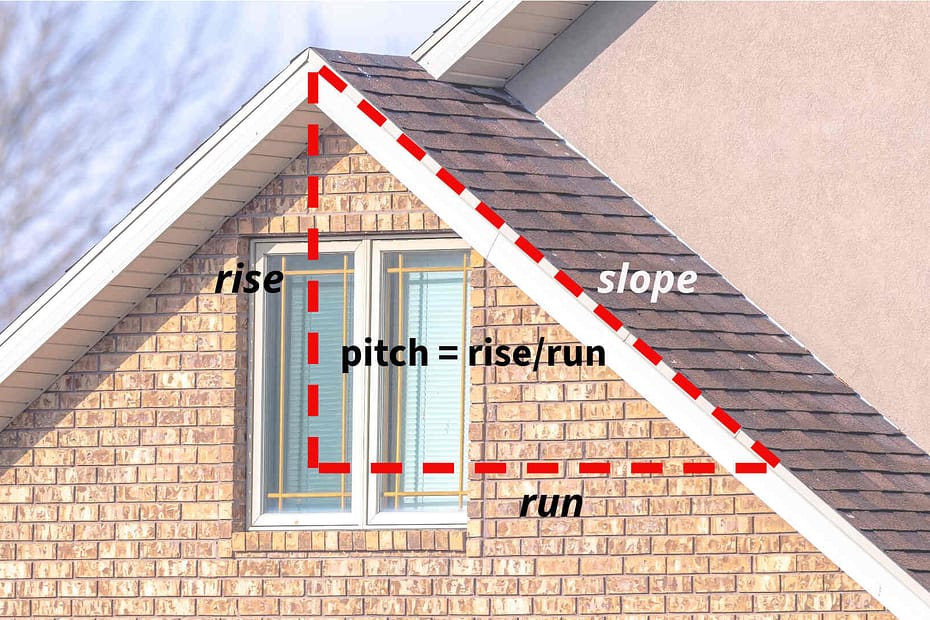Various methods exist for measuring roof pitch, each with pros and cons. Whether you prefer using a level and tape measure on the roof, measuring from your attic might be safer, or using digital tools for quick results, this guide has you covered.
Table of contents
What is Roof Pitch?
Roof pitch refers to how steep or flat your roof is. It’s usually described as a ratio like 5/12. The first number (5) tells you how high the roof goes up, and the second number (12) is the length going across. So, a 5/12 roof goes up 5 feet for every 12 feet across. This ratio helps builders and homeowners understand the slope of the roof, which is important for things like drainage and design.
Why is Roof Pitch Important?
The importance of roof pitch extends beyond mere aesthetics; it plays a pivotal role in the structural integrity and functionality of any building. A roof’s pitch—or its angle of slope—directly affects how well a building can withstand various elements like wind and snow, as well as how efficiently it can drain rainwater. Furthermore, the angle of your roof can influence energy efficiency and even impact the kind of roofing materials that can be used.
Design and Structure

The pitch of the roof significantly contributes to the overall aesthetic and architectural style of your home. Whether it’s a steeply pitched roof or a more moderate pitch seen in modern and ranch-style homes, the angle of the roof influences the home’s appearance.
Structurally, the pitch can also affect the integrity of the building. A well-designed roof pitch accommodates the architectural needs of the building, contributes to its durability, and aligns with the overall design theme.
Snow and Rain Drainage
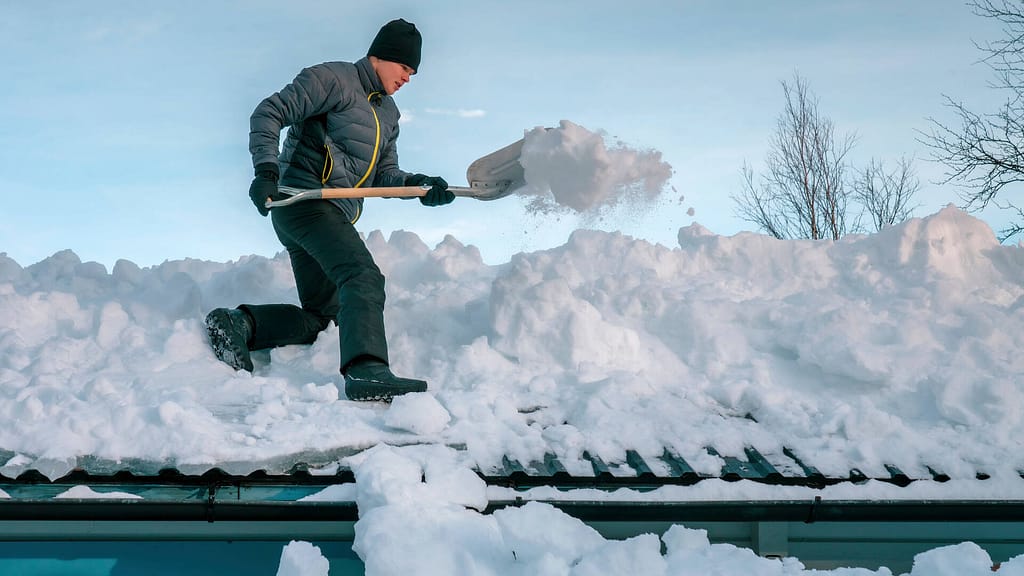
The pitch directly affects how efficiently snow and rain are drained off the roof. Steeper pitches are effective in quickly directing water and melting snow away from the roof surface, minimizing the risk of water infiltration or pooling.
Flatter roofs, however, have a greater tendency for water and snow to accumulate, which can lead to issues like leaks or even structural damage if not properly designed with adequate drainage systems.
Because of this, the Alaska government recommends a roof pitch ranging from 3 in 12 to 6 in 12 for the majority of school buildings. Additionally, sloped roofs should have a minimum pitch of 2 in 12 to facilitate effective snow shedding (Source).
Insulation and Energy Efficiency
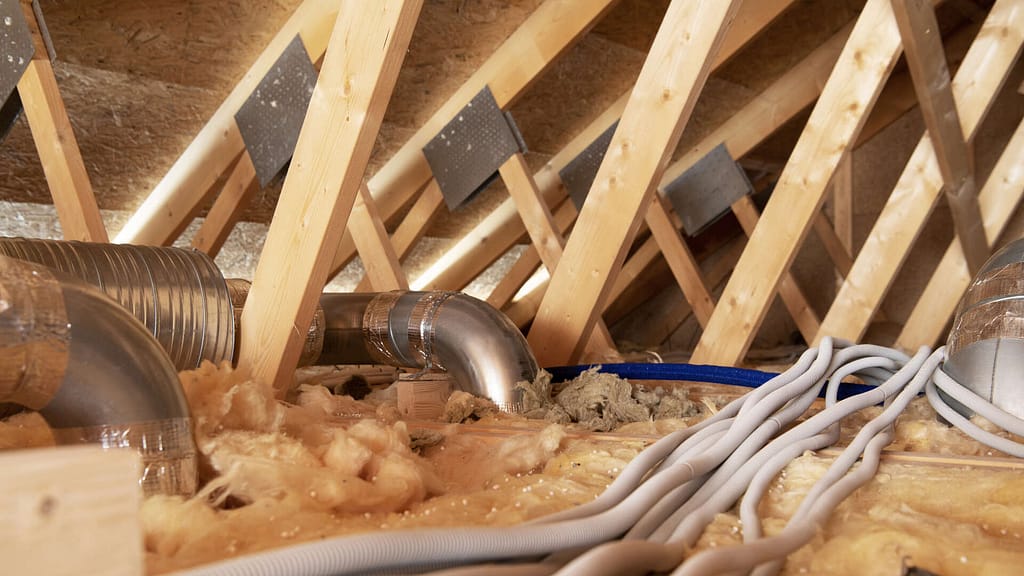
The pitch of the roof can influence the home’s thermal performance. Steeper roof pitches often provide more space for insulation, which can lead to better thermal efficiency.
This extra room can be used to add high-quality insulation material that keeps the home warm in winter and cool in summer, thus reducing energy costs. On the flip side, flatter roofs may offer less space for insulation, potentially impacting the home’s ability to regulate temperature efficiently.
How To Measure Roof Pitch?
Determining Roof Pitch from the Roof Surface
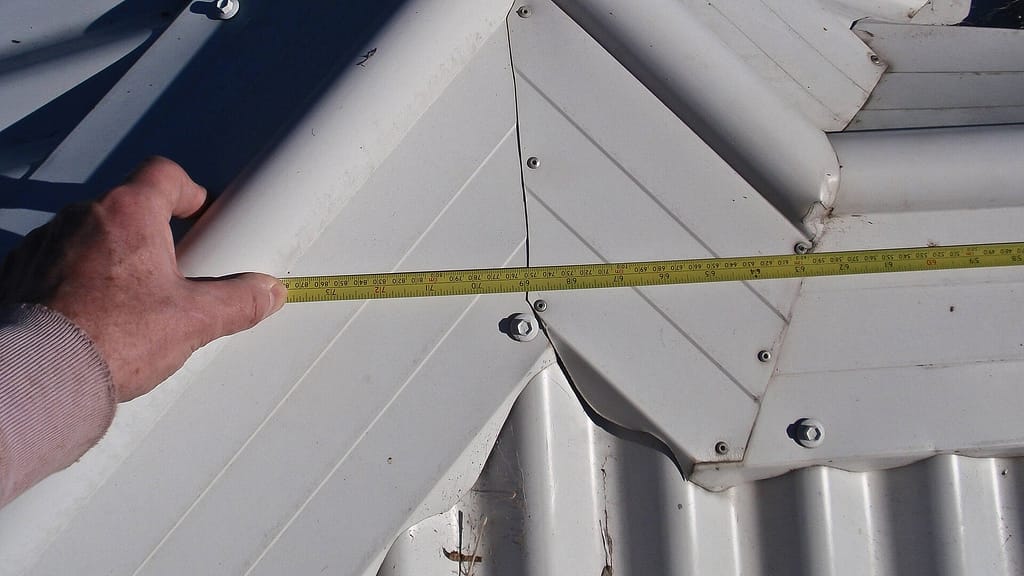
If you decide to climb up to your roof, you have to be extremely careful. The height and the ladder can be dangerous. Once you’re up there, you can figure out your roof’s angle, called the ‘pitch,’ with a level and a tape measure. Always remember to put on protective gear and avoid attempting this in severe or unfavorable weather conditions.
First, place one end of your level flat against the roof. Make a mark 12 inches from the end of the level. Hold the level straight, and then measure the distance from this mark straight down to the roof. This number is the ‘rise.’
If the rise is 5 inches, for example, your roof pitch is 5:12. You can even turn this number into an angle if you need to. To do this, you’ll just need a tape measure and a level. Make sure to only climb up if you can do so safely.
Determining Roof Pitch from Inside the Attic
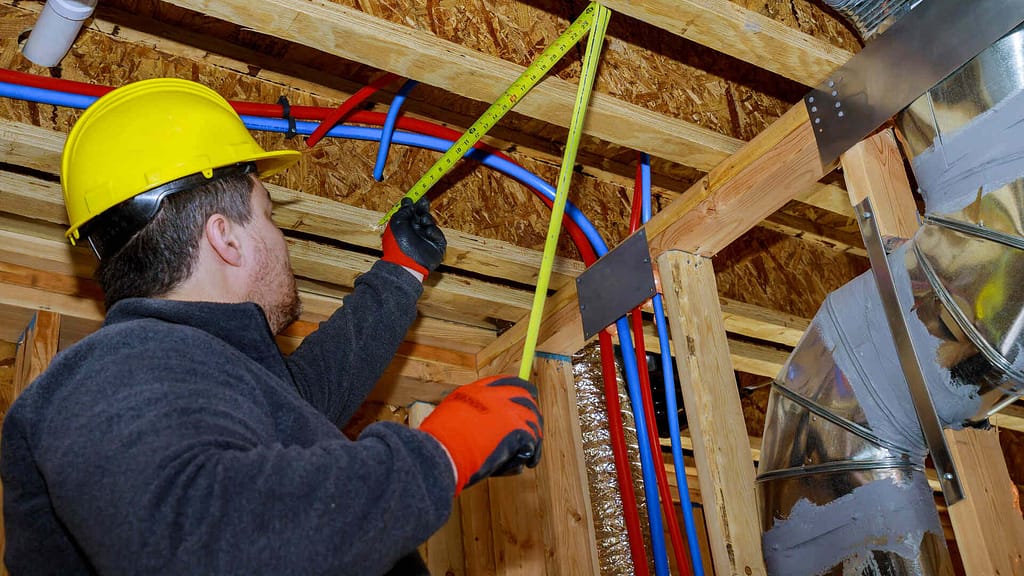
If you’d rather not climb onto your roof, you can find out your roof’s pitch from inside your attic. All you still need is a level and a tape measure.
First, place the level against the bottom side of a roof rafter, making sure the bubble is centered. Mark the level at a point 12 inches from one end. Then measure the distance from this 12-inch mark straight up to the rafter above. This gives you the ‘rise’ of your roof for every 12 inches of ‘run.’
Alternatively, you can measure the roof pitch using your attic floor as a guide. Measure a distance of 12 inches along the attic floor. Then measure vertically from this point up to the rafter. This will give you the ‘rise’ as well. For example, if this vertical measurement is 7 inches, then your roof pitch is 7:12.
Be careful to hold the level at right angles to the roof rafter to get an accurate measurement. You can do this by placing the level flush against the side of a rafter. This method works the same way as measuring from the roof, just in reverse.
Measuring from the attic can be safer, especially during adverse weather conditions when climbing onto the roof might be risky. If you live in a high moss and rain area like Washington, you might want to consider measuring your roof pitch from inside the attic. Once you’ve obtained these measurements, utilizing a Washington roof replacement cost calculator can give you a more accurate estimate of the costs involved in maintenance or replacement, tailored to local pricing and conditions.
Determining Roof Pitch using Digital Tools

Digital and mobile tools for measuring roof pitch have become increasingly popular as technology advances. These tools range from specialized apps that use the built-in sensors in your smartphone to calculate pitch, to more complex software solutions designed for contractors that may integrate with drones for aerial roof inspections.
These tools can measure roof pitch remotely by using various methods like photogrammetry, which reconstructs 3D models from photos, or by integrating with satellite and aerial imagery databases.
Such digital solutions offer significant advantages, especially in terms of safety and convenience. There’s no need to climb a ladder or physically get on the roof, reducing the risk of injury. These tools also tend to be quicker and can offer a range of additional features, like estimating roofing material needs based on the calculated pitch.
However, it’s worth noting that while these tools are highly convenient, they may not replace the need for a professional inspection for more complex roofing projects. But for a quick, general idea of your roof’s pitch, these digital and mobile tools can be incredibly useful.
For your convenience, we’ve created an easy-to-use Interactive Roof Pitch Calculator that seamlessly integrates with Google Street View.
Can You Adjust Your Home’s Roof Pitch?
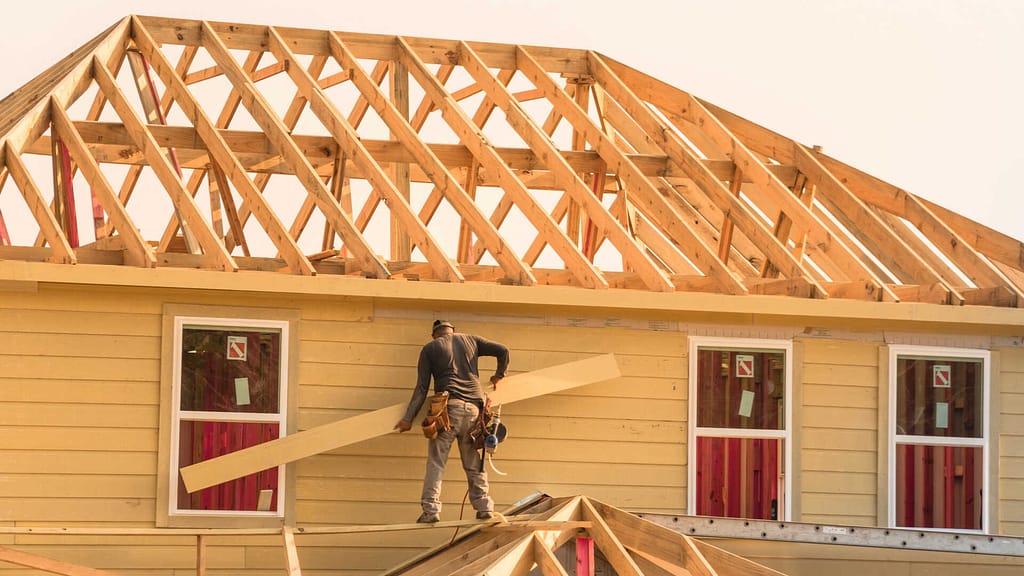
Yes, you can change your roof’s pitch, but it’s a complex and costly task. Unlike a typical roof replacement that might just involve new shingles, altering the pitch means making significant structural changes.
This could include replacing rafters, ridges, and even inside walls. Changing the pitch impacts how water drains off your roof and can also affect the look and functionality of your home, such as increasing attic space or improving curb appeal.
This is a major construction project that goes beyond just replacing the outer layer of your roof. It involves altering the structural elements like the rafters and the ridges that define the roof’s shape.
Whether you’re looking to address issues like poor drainage on a flat roof or want to enhance your home’s visual appeal, the project will require skilled carpentry and roofing expertise.
Conclusion
Roof pitch is far from a trivial consideration; it plays a critical role in a home’s resilience, efficiency, and overall appearance. Tools and methods for measuring roof pitch have evolved, enabling homeowners to assess their roofs with increased accuracy and safety, sometimes without even needing to leave the ground.
While manual calculations and digital tools can give you a basic idea, they can’t replace the expertise of a trained roofing team especially for major projects. When dealing with complex roofing works, you’ll want experts to measure everything carefully. This way, the job gets done right and safely.
Fact checked by Jacob Petrosky – 8/25/23
